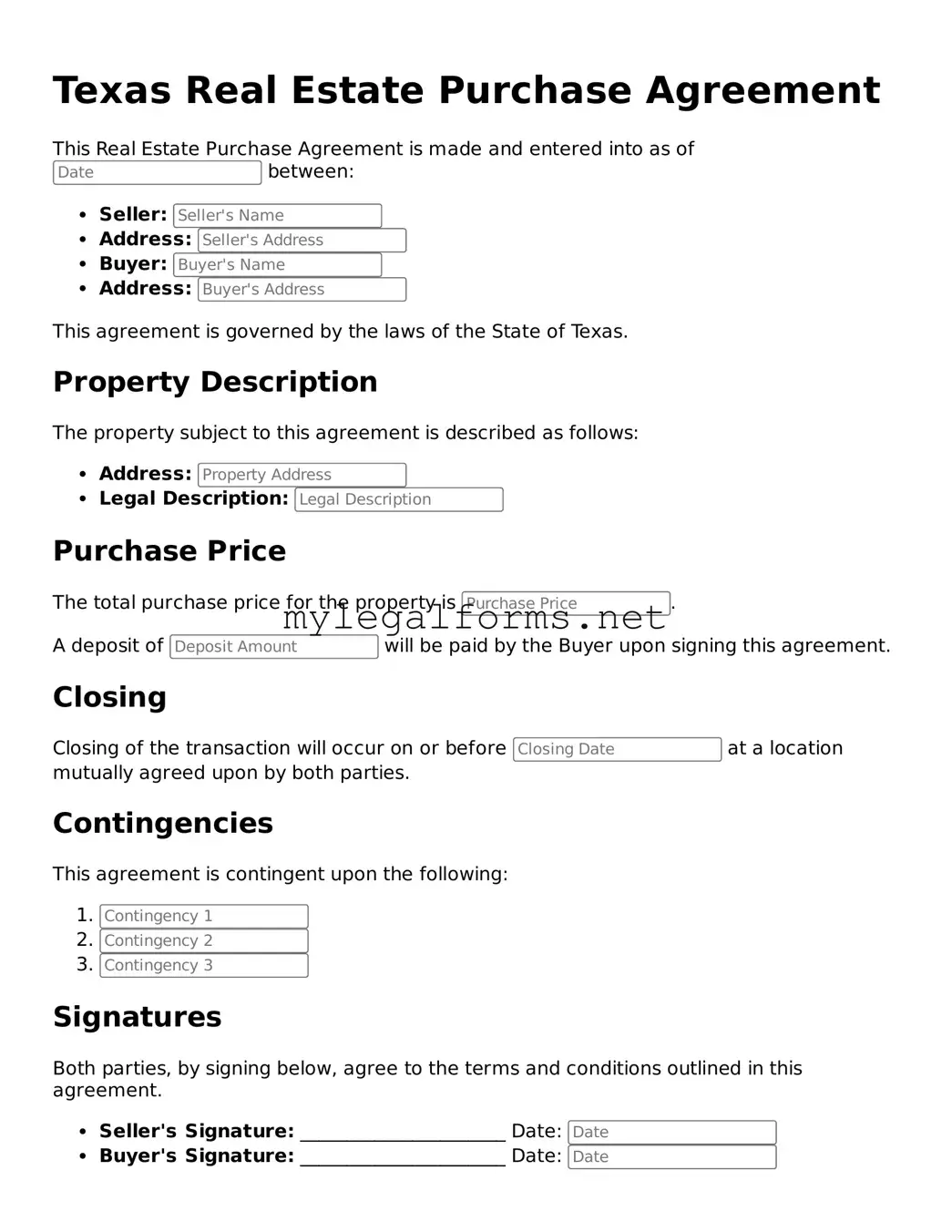Real Estate Purchase Agreement Document for Texas State
The Texas Real Estate Purchase Agreement is a legal document that outlines the terms and conditions for buying and selling property in Texas. This form serves as a crucial tool for both buyers and sellers, ensuring that all parties understand their rights and obligations. Understanding this agreement can help facilitate a smoother transaction process.
Launch Real Estate Purchase Agreement Editor
